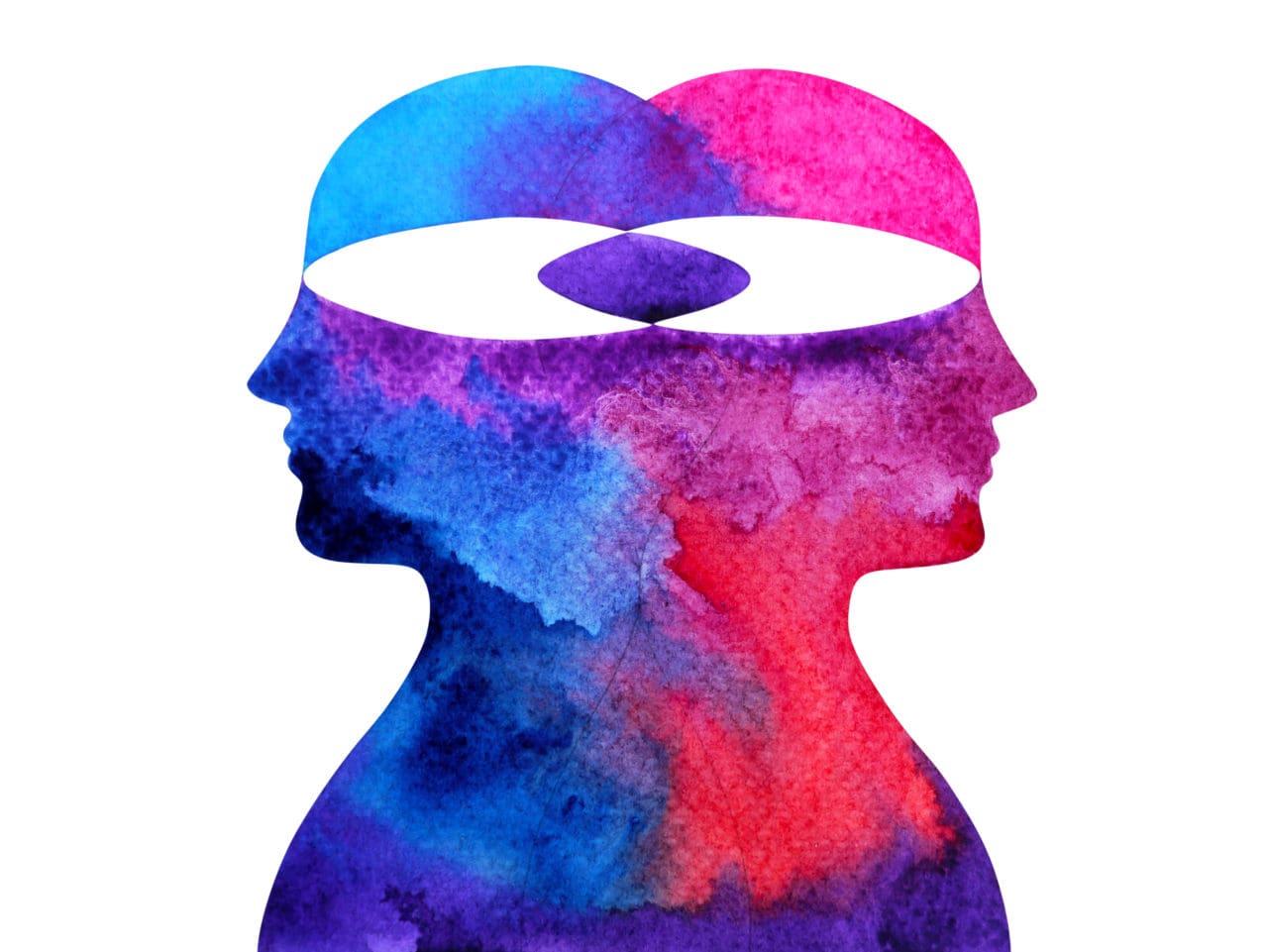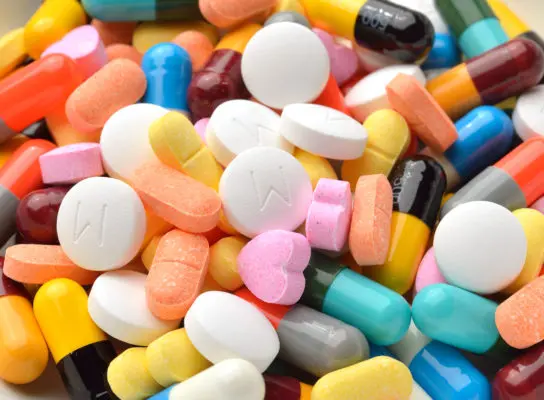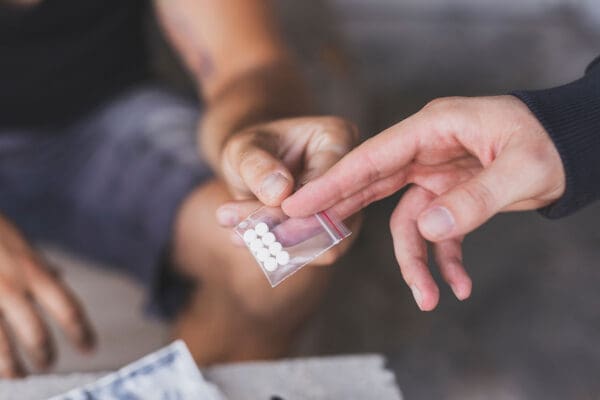Medical Editor: Dr. Benjamin Malcolm, PharmD, MPH, BCPP
Before the name “Ecstasy” was ever associated with MDMA and the underground dance scene, another psychedelic amphetamine was making its way through U.S. culture. While MDMA may be more popularly known today, MDA was frequently called the “Mellow Drug of America,” and the original “hug-drug”.
Aside from sharing a familiar origin story, both drugs are psychedelic amphetamines that have been used in therapeutic settings and recreational environments. Though both can elicit powerful psychedelic experiences, they encountered prohibition at different times with similar impacts on the field of psychedelic therapy. Currently, only MDMA is being seriously considered for psychedelic therapy, although this may one day change.
What’s the Difference Between MDA and MDMA?
First, let’s start with their full names: MDA is 3,4‐methylenedioxyamphetamine (MDA), while MDMA is 3,4‐methylenedioxymethamphetamine. The additional “M” in MDMA’s name translates to the addition of a methyl group to the amphetamine backbone of the drug. MDMA and MDA are very similar in structure overall. So much so that MDA is frequently found, but often unnoticed, in samples of illicit MDMA.
MDMA is even metabolized to MDA in the body after ingestion. While there are many similarities in their mechanisms, such as serotonin and dopamine release and binding to 5HT2A receptors, there are reports of differences between the substances.
An Overview of MDA Research
MDA and MDMA are both currently Schedule 1 drugs. While MDMA has been granted breakthrough therapy status by the FDA for the treatment of PTSD, MDA has not yet come back into mainstream research as a potential treatment option. Throughout its cultural history, MDA, and MDA-type substances, have consistently popped up on the recreational scene. And, before the Controlled Substances Act in 1970, MDA was used by therapists who had collectively produced a significant body of work indicating therapeutic effects, while the government was conducting secret trials.
MDA was first synthesized in 1910 by two German chemists who were studying the stimulating effects of medicinal plants like sassafras, nutmeg, and calamus. Structurally similar to ephedrine and amphetamine, MDA was originally explored as an anti-fatigue medicine, but its psychoactive properties didn’t start gaining interest until chemist Gordon Alles first consumed MDA with the hope of identifying a new asthma medication.
MDA Synthesis and Roots in Plant Medicine
Like most psychedelics, MDA has roots in plant medicines with long histories of traditional use, though it would be incorrect to say that MDA is a naturally occurring plant medicine. While there are many pathways for creating MDA, it is worth noting that MDA is manufactured from compounds isolated from medicinal plants that have long been used to treat asthma, fatigue, and even emotional distress.
MDA synthesis begins with several chemical precursors, ingredients that are combined through a series of chemical reactions until the final molecular structure is achieved. Sometimes these precursors are synthesized from manufactured chemicals, other times they are isolated from natural plant sources. Of these plant sources, the roots of the sassafras tree are most abundant in an important MDA precursor compound called safrole. A synthetic version of safrole called isosafrole can also be used.
Safrole oil is the naturally occurring organic compound that makes the sassafras tree sweet and fragrant, and its leaves have been used in tea to induce a mild euphoric state. Due to its carcinogenic properties, safrole oil is no longer used as an industrial food additive in rootbeers or candy. But, safrole oil is used in chemical manufacturing and industrial applications, as well as in one step of the production process for MDMA or MDA.
While MDA has several additional production steps involved that require fairly advanced chemistry, especially compared to something like psilocybin mushrooms or cannabis flowers, it does still have roots in traditional plant medicines — as do most pharmaceuticals available.
The First MDA Trip Report
Before conducting his self-experiment with MDA in 1927, chemist Gordon Alles had previously tested MDA on canine subjects, indicating that the drug consistently appeared to be one-third to one-half as active as mescaline and amphetamine. Beginning with a 36mg dose of MDA, Alles waited for any physical effects for 2 hours before ingesting another 90mg. At that point, the dose was psychoactive and he began exploring this new realm of consciousness as best he could, noting the extra-sensory elements of auditory and visual acuity it brought on.
Alles eventually reported his findings at a conference in 1959 where MDA’s psychoactive elements drew the attention of a growing culture of “psychonauts” and therapists who experimented with mind-altering drugs, including Alexander Shulgin who first tried MDA in 1961. And while Alles may have presented the first MDA trip report, there are also additional but classified reports from early MDA human trials.
Early MDA Trials and the U.S. Military
After WWII, the Nazi scientists conducting psychedelic experiments on prisoners were debriefed by the U.S. Department of Defense, which was simultaneously building out its own research programs through Project MK-Ultra. One such project was held at the Edgewood Arsenal in Maryland, where thousands of U.S. Army personnel and citizens were exposed to many experimental trials — including MDA.
In one case in 1953 at the New York State Psychiatric Institute, a civilian patient named Harold Blauer requested to be withdrawn from a trial; he was later killed by a fatal dose of 450mg of MDA, despite his requests to exit the study. The ensuing coverup and lawsuit would help reveal the extent of government testing through MK-Ultra and pave the way for the future prohibition of psychedelic research.
MDA Research Trials
Outside of the classified research trials, MDA was studied and developed into pharmaceutical drugs to treat obesity, suppress cough, and ease anxiety. It was briefly explored for treating Parkinson’s Disease. But by 1967, MDA use was emerging among people who used drugs recreationally, which gained the federal government’s attention. In 1970, MDA was prohibited under schedule 1 of the Controlled Substances Act. While the ban on MDA impacted the recreational drug supply, it also impacted therapists who had long been using MDA, mescaline, LSD, and psilocybin to facilitate psychotherapy. Some would shift to using MDMA, which was unscheduled at the time.
Some therapists, including Richard Yensen, still believed that MDA was a “useful adjunct to therapy.” Yensen would go on to conduct MDA trials in the 1970s to investigate MDA in neurotic patients.
Other therapists would also conduct MDA and psychotherapy studies, including Chilean psychiatrist Claudio Naranjo. Before ever encountering MDMA, Naranjo called MDA a “feeling optimizer” and “heart drug,” claiming it was a new psychedelic species and different from the classics of LSD, psilocybin, DMT, and mescaline. Naranjo started his MDA research early and published some of his therapeutic findings in 1974 in The Healing Journey: New Approaches to Consciousness.
In one 1974 study, MDA was described to “invite inner exploration vs. LSD which demands it.” Said more eloquently perhaps by Naranjo, the originator of this class of “feeling enhancers”:
“Just as other psychedelics have specialized therapeutic applications, such as the induction of mystical experiences, work on dreams, or the experience of perinatal states, the feeling enhancers open up what might be termed a “way of love.” This is a spontaneous willingness to keep the flame of love alive in the face of pain—rather than becoming defensive and manipulative and, in consequence, blind. The gift of the feeling optimizers is the ability to remain a healthy and loving child of Paradise in spite of the contamination of the past and pollution of the interpersonal world. This ability is supported by a radically different stance in the face of pain, a nondefensive attitude that allows for the transmutation of pain into bliss.”
And to this end, Matthew Baggot has contributed significant research. A 2010 study investigated the mystical-type experiences of MDA in healthy volunteers. Baggot’s lab also conducted a landmark 2018 study in human trials with MDA, which revealed the unique effects of MDA as both a psychedelic entactogen and an amphetamine.
MDA: The Modern Drug of America?
With its long cultural history, MDA may be more familiar than MDMA for those returning to psychedelics later in life. The benefit today is that we have a greater understanding of the impacts of this class of psychedelic amphetamines that catalyze a heart-opening and empathogenic response. Given their similarities, it stands to reason that the MDA might mimic some of the benefits offered by MDMA, but without clinical trials, these subjective differences will only bear meaning to the participant.









